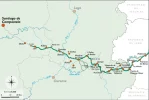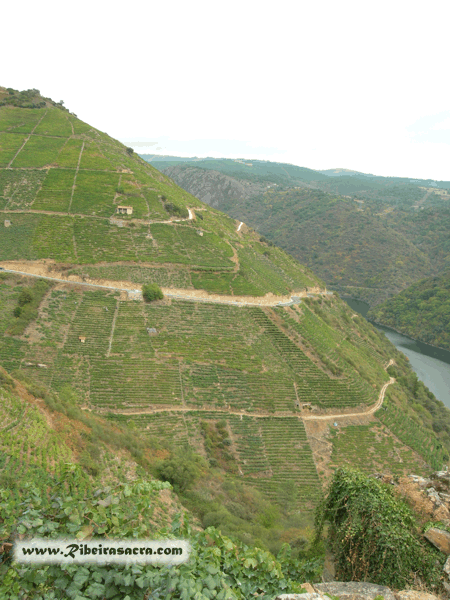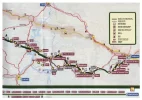So many questions here... I am afraid I can´t answer all of them, as I did not walk every step of the route, for a variety of reasons. Perhaps I should write up a full report off line and post it here as an upload?
First, though, I will say I presented my credential at the pilgrim office in Santiago on 20 April, with stamps from locations from Roncesvalles to El Acebo, and then began the oddments of the Invierno. (sellos are hard to get in places where there are only cows. I may be the only person I know who has stamps from a Döner Kebab shop, a slaughterhouse, and a chainsaw dealer). But in the end I was duly given a Compostela by a very kind man, introduced ´round the office as "The Invierno Pilgrim," and no one gave me a hard time about Official Routes.
The Invierno joins the Via de la Plata at Laxe, about 4 km. out of Lalín. The official path doesn´t really pass into Lalin, so there are no waymarks in town that I spotted. I was very glad to see that first
Camino de Santiago sign out there on the Via de la Plata -- my first in about 20 km.!
I lost the path and waymarks on the way into Lalin the day before, and had a few scary hours of being lost in a pine plantation on a wide and isolated mountainside. I was lost three times on the Invierno, all three times were on the path between Monforte and Lalin. It was always due to very sketchy, non-existent, or just plain wrong waymarking. It was infuriating at times, scary at others, exhausting always. I am NOT an un-observant hiker.
I did not walk the first day out of Ponferrada to Las Medulas. Instead, I left the Frances at El Acebo and followed a route blazed by a tourism council from El Bierzo, which leads to Peñalba de Santiago, a mountain shrine set high above the Ponferrada valley. It was very well marked, for the most part, and very high-altitude and solitary and beautiful. The following day was even more strikingly lovely, but also punishingly long (30 km) and mountainous. At Las Medulas I rejoined the Invierno path, and the following morning followed the granite markers down 9 km. of the prettiest Camino trail ever. These granite markers, as well as yellow arrows, were reliable guides all through the next couple of days... (contines next post)


























